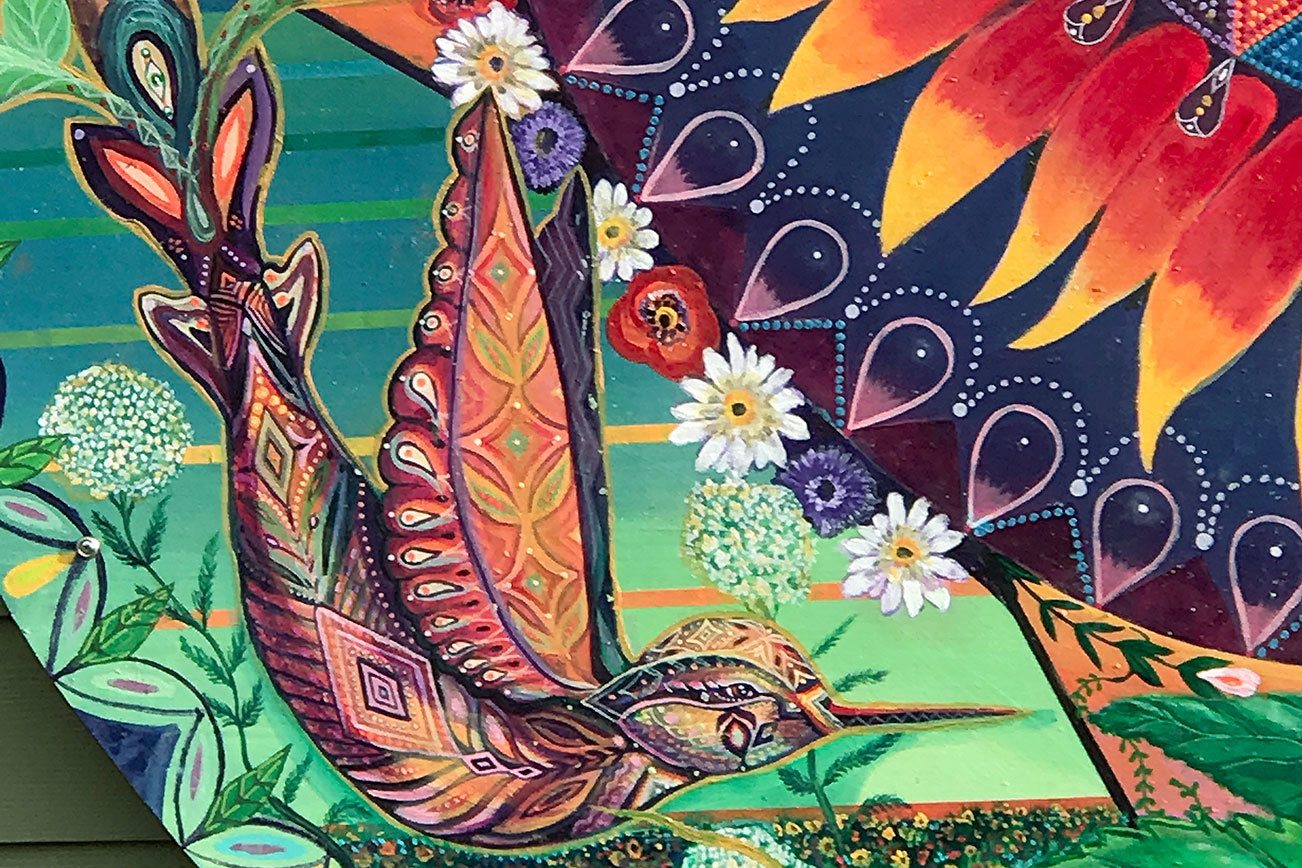For Hannah McNutt’s sixth birthday, on Nov. 4, her parents commissioned a massive painting. They knew their darling infant, who only lived to be 16 months, would never see the sparkling sunflower, which, much like Snow White, drew nature’s loveliest flora and fauna to its apricot petals.
But being outside together is what gave their family peace in the toughest of trials, when hospital was home and the littlest body gave out. So this was legacy-making: a healing space in Owen’s Playground, where painted hummingbirds and sunsets and fields of sunflowers would burst forth with vibrancy and delight, just like their turquoise blue-eyed girl had.
Allyson Brown, Hannah’s mother, met Stacy Marshall, the campaigner behind the everykid paradise, through the gateway of shared suffering.
“When families have chronically ill or really sick children, we don’t always know each other but you hear stories,” Brown explained. “Owen had a different condition but very similar challenges to Hannah.”
Eventually, after repeated airlifts wore the family down — Hannah suffered seizure after seizure — the McNutts moved from Bainbridge to Seattle, where their neighbors were close friends with Marshall’s parents.
Brown, who is the vice president of philanthropy for IslandWood, helped Marshall envision what the playground could look like, with her extended family raising money for the sensory garden. Her own contribution, she decided, would add year-round interest: a mural to conjure the garden’s lushness in more dormant seasons and preserve the memory of her daughter.
The mural’s creators, Kendall Turner and Nick Mann, both 28, work out of a home studio near Gazzam Lake.
After graduating from Bainbridge High School, Turner left for art school in Boston. She returned to the Seattle area five years ago to pursue her masters in art therapy.
Mann’s education followed a similar path, art school interspersed with traveling and mural work around the globe, with the Bay Area and New Mexico serving as his most recent homes. He returned to the island last year and the pair, who had admired each other’s work from afar for almost a decade, reconnected.
As collaborators, they create visionary art, a genre that purports to transcend the physical world with mythology, cultural practices and spirituality as its core. (Google “Pablo Amaringo” or “Huichol art” if that sentence means nothing to you.) The word “psychedelic,” by the way, is not a valid descriptor, despite the couple’s penchant for wild palettes and elaborate tableaux; as Mann put it, “we’re not into psychedelic drugs or that festival cultural.”
This type of work, Mann said, can be stressful because of its synchronicity: “The personal mythology of your life mirrors what you create, which makes you want to work harder as an artist, in a way that’s even more true and clean and pure, so that life becomes that way, too.”
But it also has its sweet moments when aesthetic patterns and reality collide, like when Turner and Mann installed their magnum opus, and a hummingbird flitted by and landed on a nearby flower.
“I’ve never seen a hummingbird stay so still for so long,” Turner said.
The artists had drawn four hummingbirds in the piece to represent Hannah’s family, after Brown told them about her daughter’s nickname, Hannah Hummingbird.
“Hummingbirds are known for making the longest and most arduous migration of any animal, traveling from Canada to Brazil, living only on nectar,” Turner said.
The playground is the parallel: a rest stop for children, “feeding their instinct to play and filling them with delight from an infinite source of nectar.”
Calla lilies were a flower Turner and Mann added intuitively, only later learning their significance as a funerary arrangement. Other blooms were selected more intentionally: zinnias for “lasting affection” and the sunflower as “the happiest of all flowers, the flower that constantly turns its face to the sun, drinking in the sun’s energy and reflecting life-force outward,” Turner explained.
The field of sunflowers in the background was also symbolic of Marshall’s son Owen, whose life and memory spurred the creation of the all-inclusive playground.
“Sunflowers are known as a symbol of God’s love, which here radiates out to Hannah, Owen and all children,” Turner wrote in her description of the piece.
The pairings of animal and interpretation could go on forever: a red-tailed hawk for guidance, a white moth’s metamorphosis, a circle that echoes the cycle of life and death and love.
But the real insight may be that meaning isn’t always clear. Our lives are scattered with these images, which we can choose to claim — or not. Are they coincidence? Encouragement? Divine? We don’t know, or at least we haven’t decided unanimously. The beauty of art and human experience is we get to decide.
To see more of Turner’s work, visit www.flickr.com/photos/kendallturnerart. Mann’s work can be viewed at www.flickr.com/photos/nickmann.



